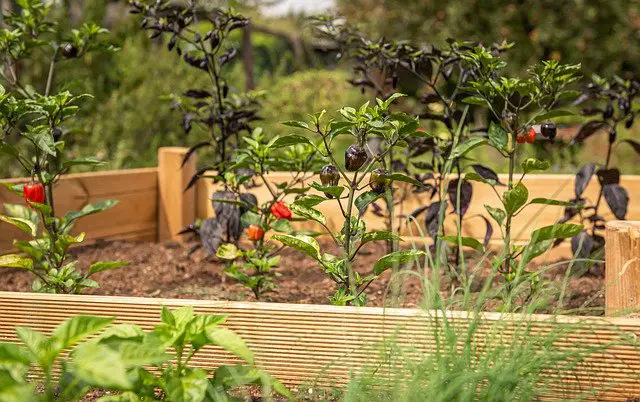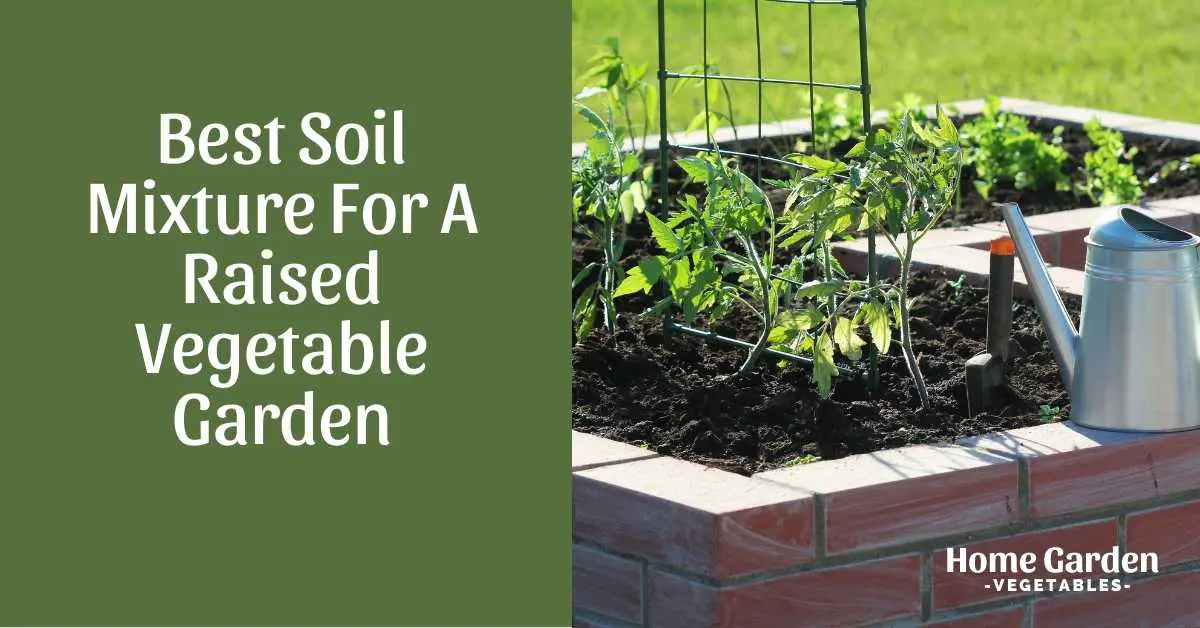One of the primary reasons why gardeners choose to plant in raised beds is because it allows them to control the soil better. It’s especially preferable over the hard-packed garden soil that’s infested with tree roots, pests, and diseases. Since you’ll be using the best soil mixture for a raised vegetable garden, you can expect faster growth and a larger harvest – the two things every gardener craves.

Why Prepare Your Own Soil Mixture – Home Made Best Soil Mixture
It’s easier to get hold of a pre-mixed soil pack from the market to fill up your raised vegetable garden, but what’s the fun in that? Here are the top reasons to get you started on your own soil mixture:
Reader Poll: What online courses would interest you?
Cheaper and Healthier Soil Mixture For A Raised Vegetable Garden
When you make your own special soil mixture, it’s much cheaper and healthier for your plants, and will not fail to give you the desired results.
Customized recipe
Additionally, while making your own soil, you can fine-tune the ingredients and their amounts according to your crop’s specific requirements. If you’re growing tomatoes, include a little more peat moss to make the soil a bit acidic because that’s what they prefer. If you plan on growing greens, keep the soil a little low on nitrogen until the seeds germinate. With these small adjustments to the soil, you’ll be ensuring optimal results for your crop.
Quality check
Additionally, each of the individual components can be checked for quality. If you add manure, make sure it’s fully composted and not “hot” anymore. If you use compost, you can make sure it’s preparation is complete.
Subscribe to our newsletter!
It’s easy!
Want another reason to get to work? It’s very easy to prepare your own soil mix – just follow the recipe.
How much soil mixture will you need?
Before getting to the recipe, you need to figure out how much soil you will need to fill in the vegetable raised bed. The process is simple. Multiply the length, width, and height of the raised bed to find its volume in cubic feet, making sure all the measurements are in the same units (foot).
If you have multiple raised beds of the same dimension, multiply the volume of one with the number of raised beds to find out your total requirement. If they’re of different sizes, find their volumes individually and add them up.
The volume you get is the amount of soil, in cubic feet, you’ll need to fill the bed. Once you have the volume, you can convert it to any suitable unit, cubic yards, for example.
If you have a very deep raised bed say 3 feet or more you should not need to completely fill it with soil. Use a filler material such as logs / sticks or cardboard that will breakdown but over time will give you space to add more compost to the top.
Recipe For The Best Soil Mixture “Homemade”
You won’t find a single best recipe for your raised vegetable garden soil mixture. Don’t expect the perfect combination right from your first growing season. It’s a learning process; you’ll notice yourself getting better at it with each growing season. What we can offer is the recipe for a solid foundation. To that, you can make adjustments according to what you grow in your veggie garden.
- 50% topsoil
Buy good quality topsoil manufactured by a trusted brand. You can purchase them in bags if you have a smaller raised bed to fill. You’ll need to purchase in bulk if your requirement is large. Do remember to test the quality before purchasing it, however.
Take a handful of soil in your hand and squeeze it in your fist. It should hold together even after you open your fist but should break apart instantly when you poke it with a finger. If the soil doesn’t hold together when you squeeze it, it’s too sandy. If it doesn’t break apart easily, it’s too heavy. Other than that, the color should be dark brown rather than grey or light brown.
- 30% compost
Compost is an essential ingredient of our recipe to the best vegetable garden soil. Now, you can prepare compost at home or purchase it from a supplier. Many gardeners prefer making homemade compost, but it’s a long process. It can take over a year before your compost is completely ready.
Unless you have it prepared already, the better option is to purchase it from a certified supplier. Not every compost is created equally. With certified compost, you can be sure that it has the right components to hold moisture for your vegetable crop and deliver them the right nutrients.
- Amend with the remaining 20%
While compost is a valuable addition to your raised bed vegetable garden, it might not include all the essential minerals that are important for the balanced growth of that particular crop. That’s where the remaining 20% of your special soil mixture helps you. It’s also what makes it your signature mix!
You can include a couple of these elements to cover the remaining 20% of your soil mixture:
- Chopped leaves
Chopped leaves are an all-time favorite since they’re free and add excellent volume to your garden mix. Just chop up the leaves from your garden and leave them to rot in a compost pile. They’ll be ready in about six months; that’s when you can incorporate them in your soil mixture.
- Ground bark
Ground bark, especially from the pine tree, is also a nice addition. Aged pine bark is the perfect addition for vegetables that prefer acidic soil, including tomatoes, pumpkins, garlic, cucumbers, and carrots.
- Mushroom compost
Mushroom compost is easily available and does not affect the overall pH of your soil since it’s of neutral pH. This dark brown compost material isn’t prepared from mushrooms but is a byproduct of the soil in which mushrooms grew. It’s acquired once the mushrooms are harvested, packaged, and sold as compost.
- Mineralized soil blend
Mineralized soil blend is easily available and adds minerals that are missing or inadequate in the existing soil. Additives such as granite dust, greensand, gypsum, and lime offer some essential minerals to the soil to enhance vegetable growth.
- Peat moss
Peat moss is a popular ingredient for the various benefits it offers. It’s slightly acidic and great for moisture retention.
Conclusion
Now that you have all the ingredients inside your raised vegetable garden, incorporate them well with a hoe. That’s all; you have the perfect start to a successful growing season. Just sow the seeds, sit back, and see the magic happen!

